Publications

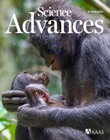
doi: 10.1126/sciadv.adw4495
Duquesne E, Fournier D (2025) Urban and agricultural areas under threat of the termite pest genus Heterotermes: insights from species distribution modelling and phylogeny. Journal of Pest Science, 98, 1357-1378.
doi: 10.1007/s10340-025-01866-6
Duquesne E, Fournier D (2024) Connectivity and climate change drive the global distribution of highly invasive termites. Neobiota 92, 281-314.
doi: 10.3897/neobiota.92.115411
Langel J-L, Vanleynseele C, Fournier D, Tremblay R, de Montgolfier B (2024) Early-season hurricane Beryl’s impact on marine turtle nesting in Martinique. Caribbean Journal of Science 54, 323-328.
doi: 10.18475/cjos.v54i2.a12

doi: 10.1111/eea.13285
Steenacker M, Tanabe LK, Rusli MU, Fournier D (2023) The influence of incubation duration and clutch relocation on hatchling morphology and locomotor performances of green turtle (Chelonia mydas). Journal of Experimental Marine Biology and Ecology 569, 151954.
doi: 10.1016/j.jembe.2023.151954
Fournier D, Aron S (2021) Hybridization and invasiveness in social insects – The good, the bad and the hybrid. Current Opinion in Insect Science 46, 1-9.
doi: 10.1016/j.cois.2020.12.004
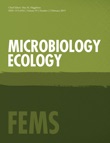
doi: 10.1093/femsec/fiy235
Hellemans S, Dolejšová K, Křivánek J, Fournier D, et al. (2019) Widespread occurrence of asexual reproduction in higher termites of the Termes group (Termitidae: Termitinae). BMC Evolutionary Biology 19, 131.
doi: 10.1186/s12862-019-1459-3
Hellemans S, Marynowska M, Drouet T, Lepoint G, Fournier D, et al. (2019) Nest composition, stable isotope ratios and microbiota unravel the feeding behaviour of an inquiline termite. Oecologia 191, 541-553.
doi: 10.1007/s00442-019-04514-w
Hellemans S, Fournier D, Hanus R, Roisin Y (2019) Sex ratio variations among years and breeding systems in a facultatively parthenogenetic termite. Insectes sociaux 66, 129-138.
doi: 10.1007/s00040-018-0667-y
Vanderplanck M, Roger N, Moerman R, et al. (2019) Bumble bee parasite prevalence but not genetic diversity impacted by the invasive plant Impatiens glandulifera. Ecosphere 10, e02804.
doi: 10.1002/ecs2.2804
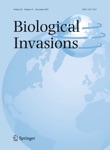
doi: 10.1007/s10530-018-1769-1
Wauters N, Dekoninck W, Nagy ZT, Fournier D (2018) Impact of laying date and fire ants on hatchlings of Chelonoidis porteri on Santa Cruz Island, Galápagos, Ecuador. Herpetological Conservation and Biology 13, 479-487.
Aron S, Fournier D (2017) Le sexe, une entreprise coûteuse mais bénéfique. La Recherche - Hors-série 21, 28-32.
Hellemans S, Fournier D, Hanus R, Roisin Y (2017) Secondary queens in the parthenogenetic termite Cavitermes tuberosus develop through a transitional helper stage. Evolution & Development 19, 253-262.
doi: 10.1111/ede.12240
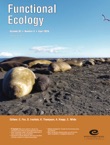
doi: 10.1111/icad.12213
Wauters N, Fournier D, Dekoninck W (2017) Do agricultural zones on Santa Cruz Island, Galápagos, host native and endemic arthropods? Pan-Pacific Entomologist 93, 141-158.
doi: 10.3956/2017-93.2.141
Aron S, Lybaert P, Baudoux C, Vandervelden M, Fournier D (2016) Sperm production characteristics vary with level of sperm competition in Cataglyphis desert ants. Functional Ecology 30, 614-624.
doi: 10.1111/1365-2435.12533
Fournier D, de Biseau J-C, De Laet S, et al. (2016) Social structure and genetic distance mediate nestmate recognition and aggressiveness in the facultative polygynous ant Pheidole pallidula. PLoS ONE 11, e0156440.
doi: 10.1371/journal.pone.0156440
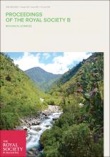
Proceedings of the Royal Society B: Biological Sciences 283, 2016.0196.
doi: 10.1098/rspb.2016.0196
Moerman R, Vanderplanck M, Roger N, et al. (2016) Growth rate of bumblebee larvae is related to pollen amino acids. Journal of Economic Entomology 109, 25-30.
doi: 10.1093/jee/tov279
Wauters N, Dekoninck W, Hendrickx F, Herrera HW, Fournier D (2016) Habitat association and coexistence of endemic and introduced ant species in Galápagos Islands. Ecological Entomology 41, 40-50.
doi: 10.1111/een.12256

doi: 10.1007/s12686-014-0411-5
Gérard M, Michez D, Fournier D, et al. (2015) Discrimination of haploid and diploid males of Bombus terrestris (Hymenoptera; Apidae) based on wing shape. Apidologie 46, 644-653.
doi: 10.1007/s13592-015-0352-3
Wauters N, Dekoninck W, Herrera H, Fournier D (2014) Distribution, behavioral dominance and potential impacts on endemic fauna of the tropical fire ant Solenopsis geminata (Hymenoptera: Myrmicinae) in the Galápagos archipelago. Pan-Pacific Entomologist, 90, 205-220.
doi: 10.3956/2014-90.4.205
Fournier D, Tindo M, Kenne M, et al. (2012) Genetic structure, nestmate recognition and behaviour of two cryptic species of the invasive big-headed ant Pheidole megacephala. PLoS ONE 7, e31480.
doi: 10.1371/journal.pone.0031480
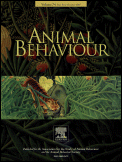
doi: 10.14411/eje.2012.012
Aron S, Steinhauer N, Fournier D (2009) Influence of queen phenotype, investment and maternity apportionment on the outcome of fights in cooperative foundations of the ant Lasius niger. Animal Behaviour 77, 1067-1074.
doi: 10.1016/j.anbehav.2009.01.009
Foucaud J, Orivel J, Fournier D, et al. (2009) Reproductive system, social organization, human disturbance and ecological dominance in native populations of the little fire ant, Wasmannia auropunctata. Molecular Ecology 18, 5059-5073.
doi: 10.1111/j.1365-294X.2009.04440.x
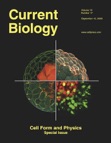
doi: 10.1016/j.cub.2009.07.021
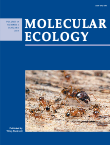
doi: 10.1111/j.1365-294X.2008.04018.x
Orivel J, Grangier J, Foucaud J, et al. (2009) Ecologically heterogeneous populations of the invasive ant Wasmannia auropunctata within its native and introduced ranges. Ecological Entomology 34, 504-512.
doi: 10.1111/j.1365-2311.2009.01096.x
Fournier D, Battaille G, Timmermans I, Aron S (2008) Genetic diversity, worker size polymorphism and division of labour in the polyandrous ant Cataglyphis cursor. Animal Behaviour 75, 151-158.
doi: 10.1016/j.anbehav.2007.04.023
Fournier D, Dubois D, Aron S (2008) Isolation and characterization of microsatellite loci from the invasive ant Pheidole megacephala. Molecular Ecology Resources 8, 919-922.
doi: 10.1111/j.1755-0998.2008.02116.x
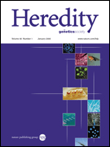
doi: 10.1038/hdy.2008.72
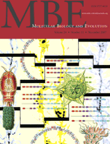
Foucaud J, Fournier D, Orivel J, et al. (2007) Sex and clonality in the little fire ant. Molecular Biology and Evolution 24, 2465-2473.
doi: 10.1093/molbev/msm180
Fournier D, Aron S (2007) Le sexe, si nécessaire. Les Dossiers de La Recherche 27, 20-25.
Tripet F, Fournier D, Nonacs P, Keller L (2006) Kin recognition and the paradoxical patterns of aggression between colonies of a Mojave desert Pheidole ant. Insectes sociaux 53, 127-135.
doi: 10.1007/s00040-005-0846-5

doi: 10.1007/s00265-005-0964-0
Estoup A, Fournier D (2005) Guerre des sexes chez une fourmi : reproduction clonale des mâles et des reines. M/S Médecine Sciences 21, 907-909.

doi: 10.1038/nature03705
Fournier D, Foucaud J, Loiseau A, et al. (2005) Characterization and PCR multiplexing of polymorphic microsatellite loci for the invasive ant Wasmannia auropunctata. Molecular Ecology Notes 5, 239-242.
doi: 10.1111/j.1471-8286.2005.00889.x
Fournier D (2004) Population genetic structure, mating system and conflicts in Pheidole ants PhD thesis, Université Libre de Bruxelles.
Fournier D, Aron S, Keller L (2004) Significant reproductive skew in the facultatively polygynous ant Pheidole pallidula. Molecular Ecology 13, 203-210.
doi: 10.1046/j.1365-294X.2003.02036.x
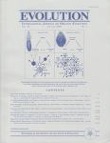
doi: 10.1554/03-648
Fournier D, Keller L, Passera L, Aron S (2003) Colony sex ratios vary with breeding system but not relatedness asymmetry in the facultatively polygynous ant Pheidole pallidula. Evolution 57, 1336-1342.
doi: 10.1111/j.0014-3820.2003.tb00341.x

doi: 10.1046/j.1365-294X.2002.01573.x
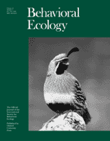
doi: 10.1093/beheco/13.1.28
Fournier D, Keller L (2001) Partitioning of reproduction among queens in the Argentine ant, Linepithema humile. Animal Behaviour 62, 1039-1045.
doi: 10.1093/beheco/13.1.28
















